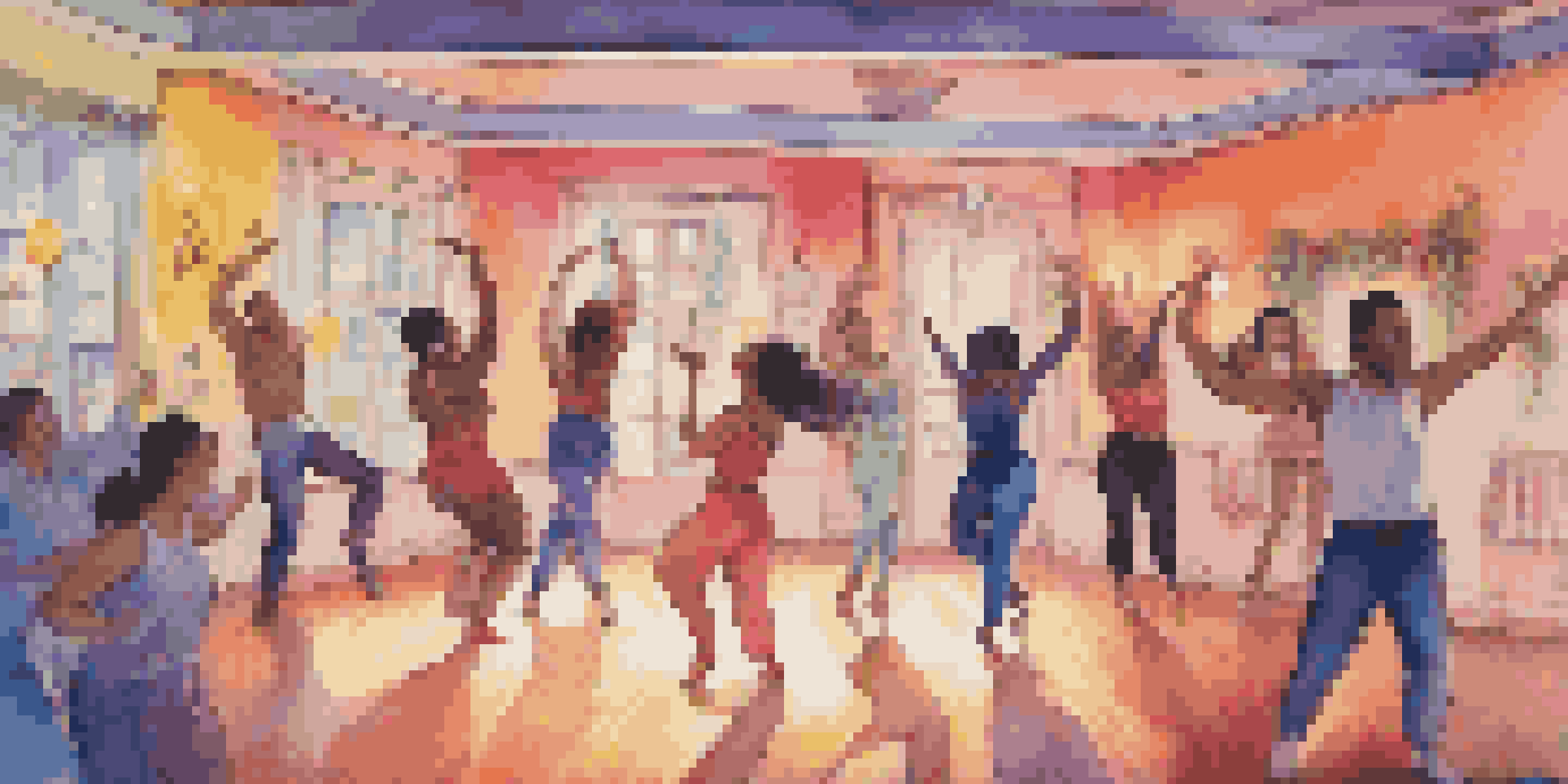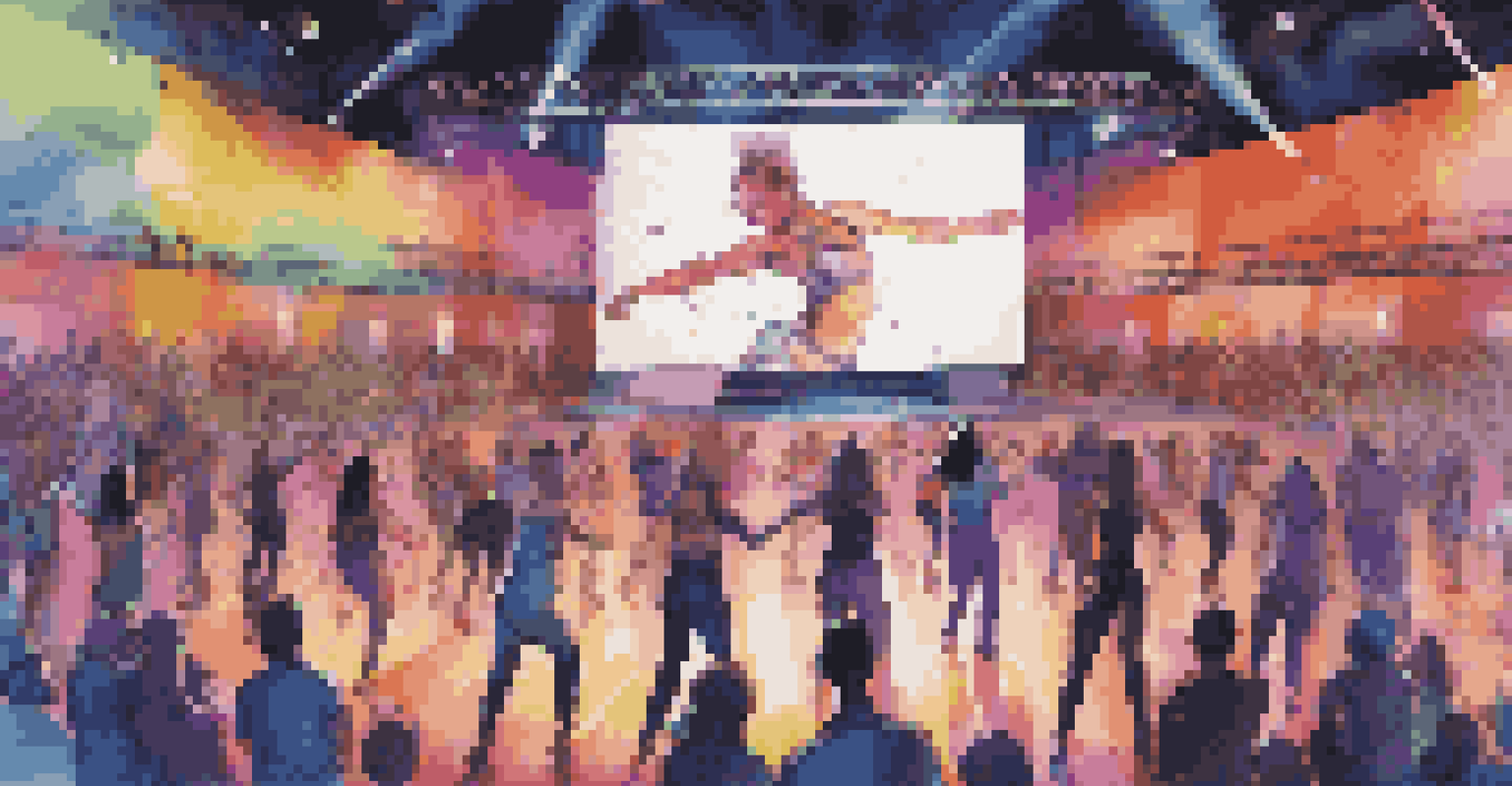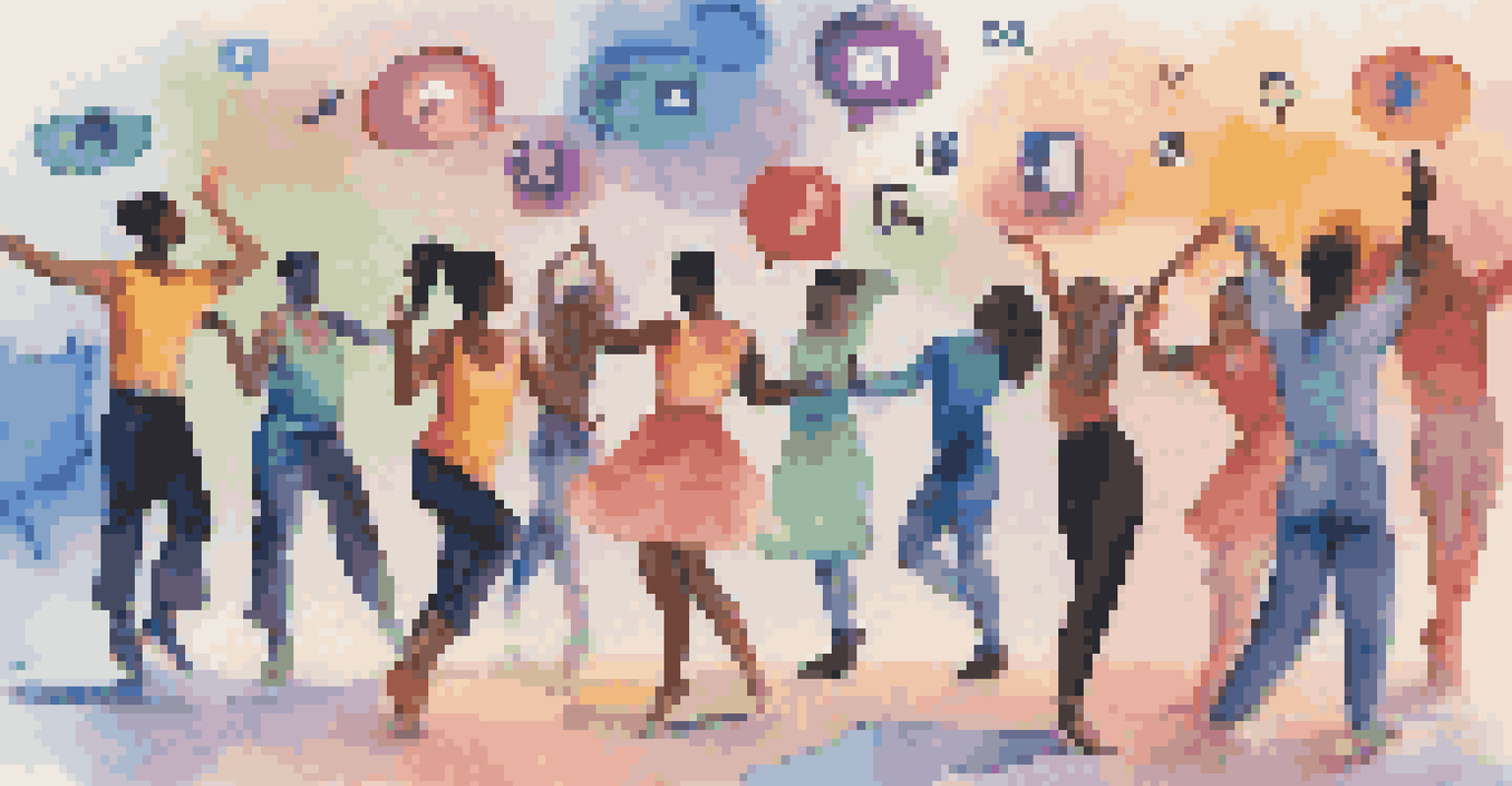Dance Competitions in the Digital Age: New Formats and Access

The Shift to Virtual Dance Competitions
In recent years, dance competitions have seen a notable shift to virtual formats. This transition was accelerated by the global pandemic, which forced many events to adapt to online platforms. Dancers from all over the world can now showcase their talents without geographical constraints, making competitions more inclusive than ever.
Dance is the hidden language of the soul.
Virtual formats allow participants to record their performances and submit videos, which judges evaluate remotely. This not only reduces logistical challenges but also provides dancers with the freedom to present their best work without the pressure of a live audience. As a result, we’re witnessing a diverse range of styles and creative expression, as dancers can edit their videos to highlight their unique talents.
However, this new approach also presents challenges, such as the lack of immediate feedback and the potential for technical issues. Despite these hurdles, the overall accessibility and reach of virtual competitions have opened doors for many aspiring dancers who may not have had the opportunity to compete otherwise.
Hybrid Competitions: Blending In-Person and Online Formats
Hybrid competitions are emerging as a popular solution, combining both in-person and online elements. In these formats, dancers can choose to perform live at an event or submit a pre-recorded video. This flexibility accommodates varying comfort levels and circumstances, allowing more participants to join in.

These hybrid models often enhance engagement, as live audiences can cheer on performers while also enjoying digital submissions. For example, competitions might host live performances with simultaneous online voting, creating an interactive experience for viewers. This blend of formats not only diversifies participation but also enriches the overall experience for everyone involved.
Virtual Competitions Enhance Access
The shift to virtual dance competitions has increased accessibility for dancers worldwide, allowing them to showcase their talents without geographical barriers.
Moreover, hybrid competitions can attract a wider audience, as people who may not be able to attend in person can still participate from home. This accessibility fosters a sense of community among dancers and fans alike, bridging the gap between local talent and global audiences.
The Role of Social Media in Dance Competitions
Social media has transformed how dance competitions are promoted and experienced. Platforms like Instagram, TikTok, and YouTube allow dancers to showcase their skills, build followings, and connect with others in the dance community. These platforms serve as powerful tools for sharing competition highlights, behind-the-scenes content, and even tutorials.
The only way to make sense out of change is to plunge into it, move with it, and join the dance.
Competitions often leverage social media to create buzz and engage audiences through live streams and updates. Dancers can gain visibility by sharing their journeys, which can lead to opportunities beyond competitions, such as sponsorships or collaborations. This visibility helps to democratize dance, allowing anyone with talent and creativity to be recognized.
However, the pressure to maintain an online presence can be overwhelming for some dancers. Striking a balance between performance and social media engagement is essential for fostering a healthy relationship with both art forms.
Judging in the Digital Era: New Criteria and Challenges
With the rise of virtual and hybrid formats, judging criteria for dance competitions are evolving. Judges now consider not only the technical skills and artistry of a performance but also the quality of the video presentation. This shift highlights the importance of lighting, angles, and overall production value in the digital age.
While this new approach can enhance the viewing experience, it also raises questions about fairness. Dancers with access to better filming equipment or editing software may have an advantage, which could skew results. To address this, some competitions are implementing standardized guidelines to level the playing field, ensuring that talent remains the primary focus.
Hybrid Formats Offer Flexibility
Hybrid competitions combine in-person and online elements, providing participants with the choice to perform live or submit pre-recorded videos, accommodating different comfort levels.
Additionally, the shift to digital judging means judges must adapt to evaluating performances without the benefit of seeing dancers in person. This can challenge their ability to assess stage presence and audience interaction, which are often key components of dance performances.
Accessibility and Inclusivity in Dance Competitions
One of the most significant benefits of digital dance competitions is increased accessibility. Dancers from diverse backgrounds and abilities can participate without the barriers associated with travel or high entry fees. This inclusivity fosters a richer tapestry of talent and creativity, as more voices are represented in the dance community.
Organizations are actively working to create opportunities for underrepresented groups in dance by offering scholarships and support for virtual competitions. This proactive approach encourages participation from marginalized communities, helping to bridge gaps and create a more equitable landscape in competitive dance.
Moreover, the accessibility of online platforms allows for a wider array of dance styles to be showcased. From hip-hop to contemporary, dancers can explore and share their unique interpretations, enriching the competition experience for judges and audiences alike.
The Future of Dance Competitions: Trends to Watch
As technology continues to evolve, so too will the landscape of dance competitions. Emerging trends such as augmented reality (AR) and virtual reality (VR) could revolutionize how performances are experienced. Imagine a future where audiences can immerse themselves in a dance performance from their living room, feeling as though they are part of the action.
Additionally, the integration of artificial intelligence (AI) in judging and feedback processes is on the horizon. AI technology could analyze performances in real-time, offering insights that help dancers refine their skills and improve their craft. This innovative approach could enhance learning while maintaining the human element of artistic evaluation.
Social Media Boosts Visibility
Social media platforms empower dancers to share their performances and build their followings, creating opportunities for recognition beyond traditional competitions.
Ultimately, the future of dance competitions lies in a balanced blend of tradition and innovation. Embracing new technologies while honoring the essence of dance will pave the way for a vibrant and dynamic competitive environment.
Building a Community in the Digital Dance Space
The digital age has transformed how dancers connect and build communities. Online forums, social media groups, and virtual classes allow dancers to share experiences, tips, and challenges. This sense of belonging is crucial for personal growth and can inspire creativity and collaboration across borders.
Dancers are increasingly forming virtual collectives and partnerships, creating opportunities for joint projects and performances that transcend geographic limitations. These collaborations not only enrich individual dancers' experiences but also contribute to a more diverse and vibrant dance culture.

Moreover, community-building efforts extend to mentorship programs, where experienced dancers can guide newcomers through online platforms. This support system fosters growth and encourages the next generation of dancers to explore their passion with confidence and creativity.